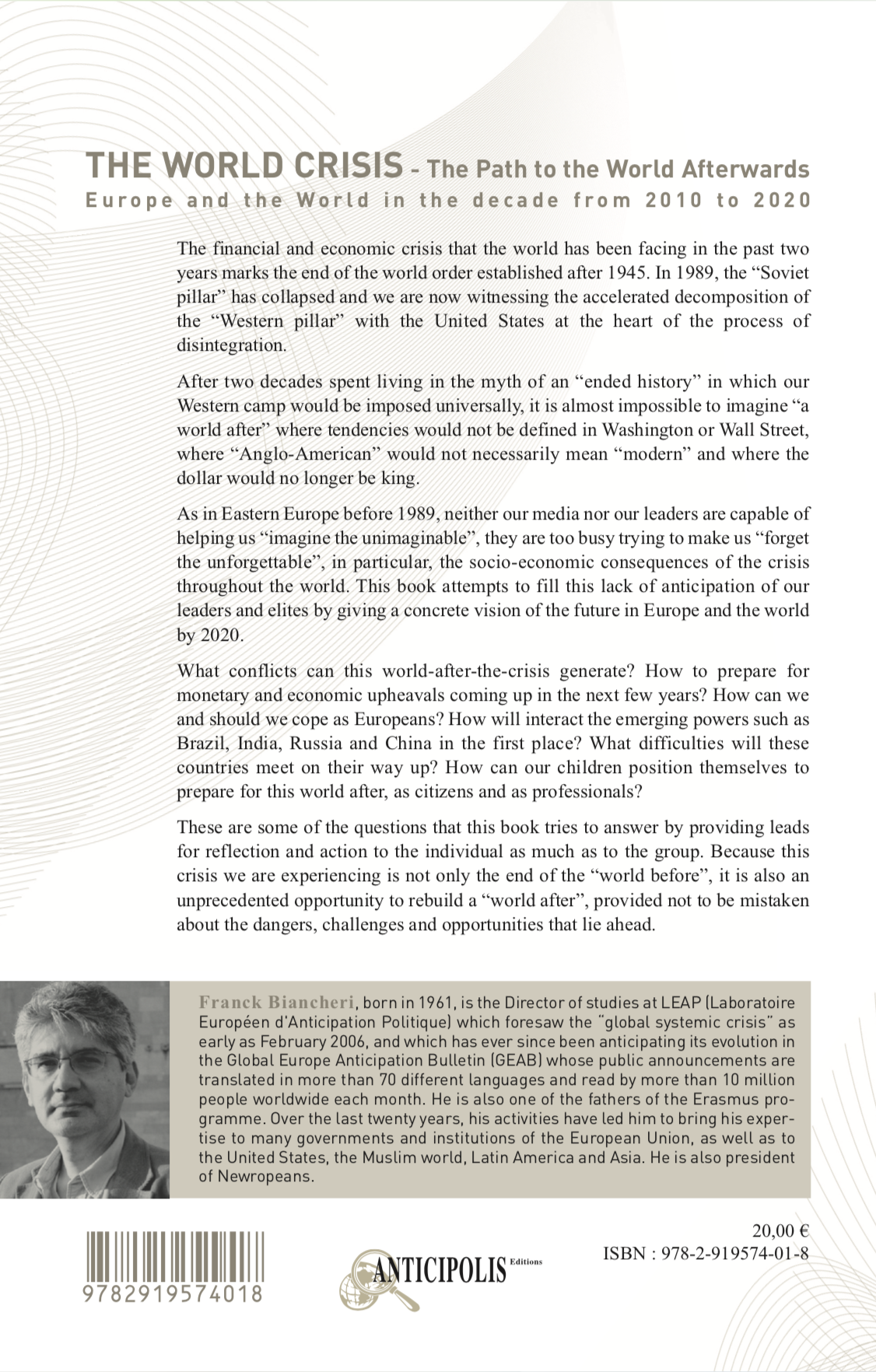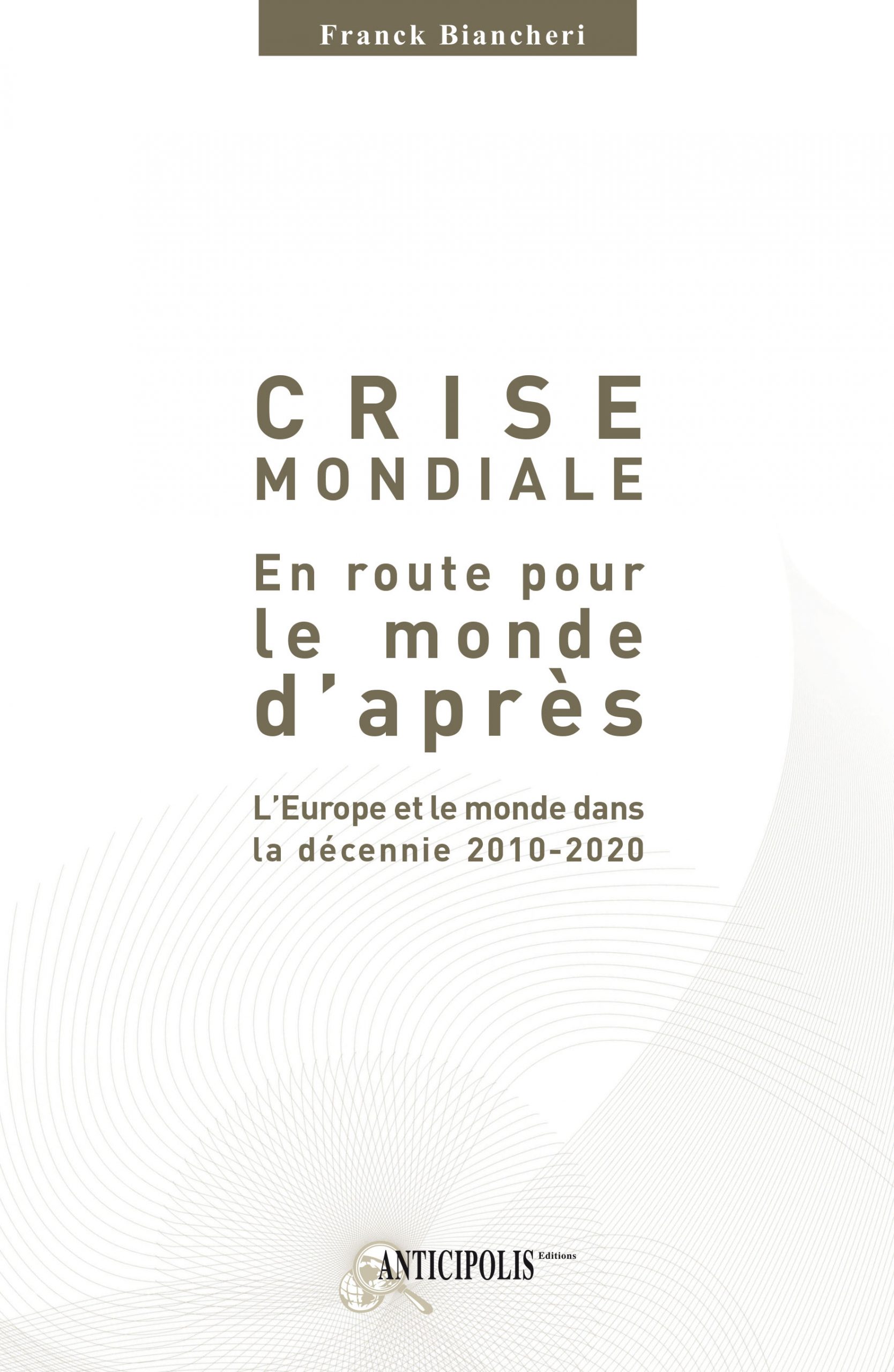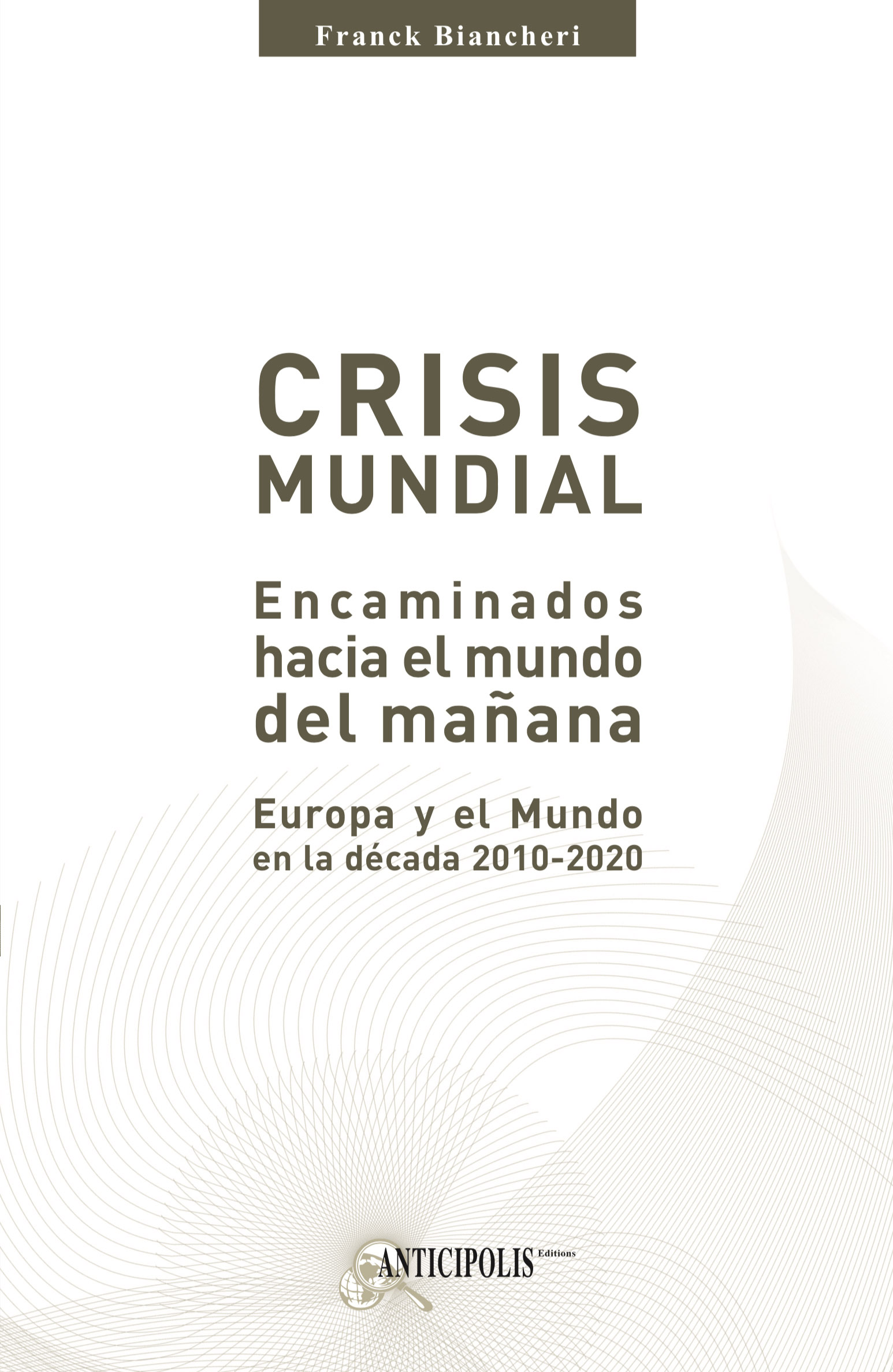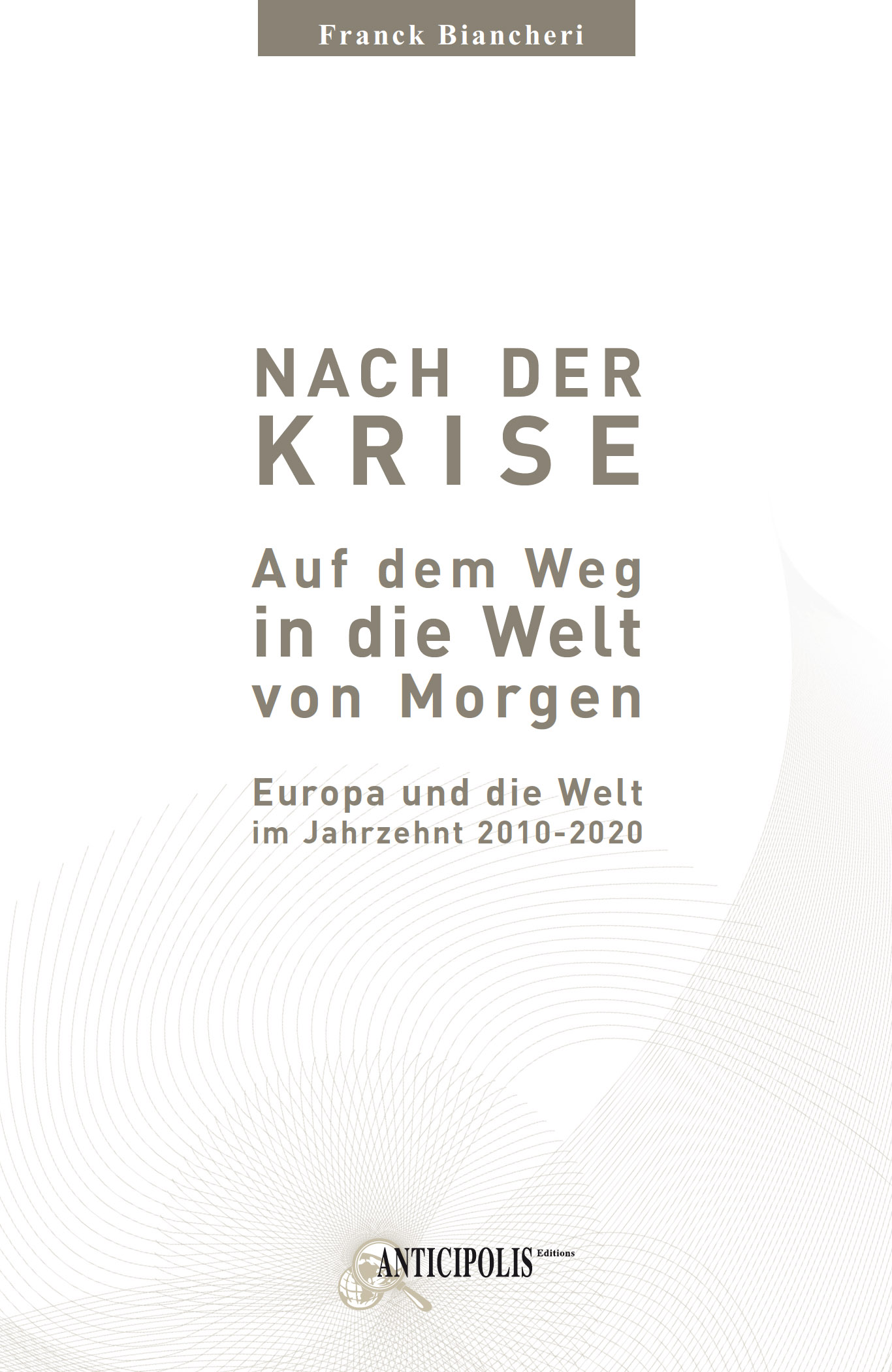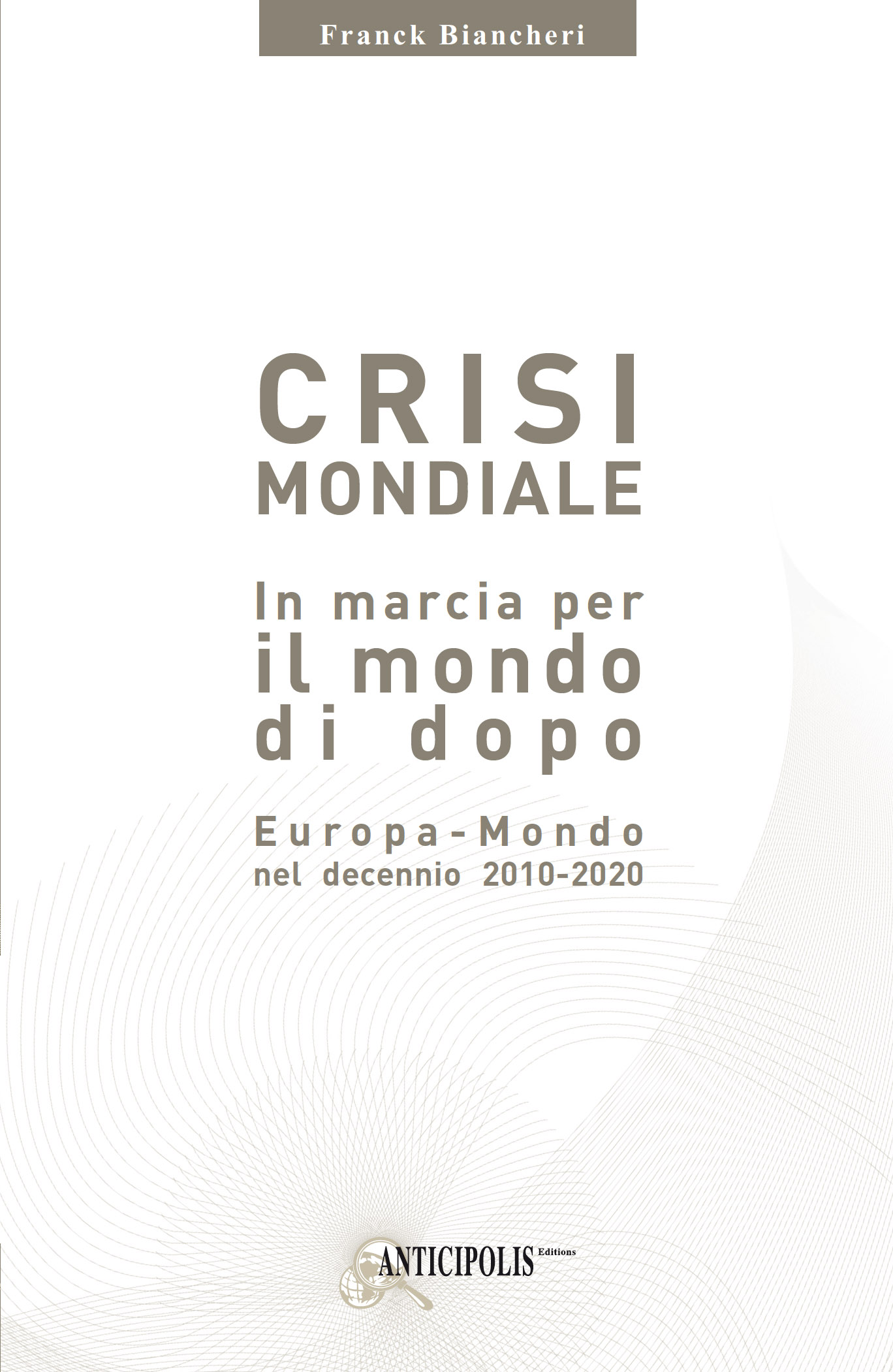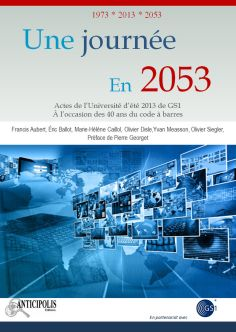The first half of the decade marked primarily by world geopolitical dislocation
The crisis, because it wasn’t anticipated by world leaders, is advancing at its own speed. In 2009 the financial efforts, without historical precedent, of the United States, Europe, China, Japan and other countries have allowed only two things to happen: to anesthetize the general population in various countries in order to postpone a violent political and social reaction and to save the major financial institutions without reforming them. All that done at the cost of an intolerable State debt burden, the conversion of a very large part (around 30%) of the world economy into a “zombie economy” (that’s to say surviving only through direct or indirect state aid or even via the manipulation of accounting rules) and a growing distrust of Western public opinion vis-à-vis all the ruling classes rightly suspected of being no more than the representatives of the most powerful financial interests. Alongside these very visible events, and ultimately in the short or medium term, the crisis represents other secular trends profoundly changing the world order we know, in particular China and India’s return to power and the end of a Western centric world.
The decade now dawning will be the setting for the interaction between these two “stages” of the crisis which, whilst being correlated of course, are not identical. The secular trends can be seen, over a decade, as data, that’s to say as events for which one can prepare without really being able to affect their progress while other events (lasting between two to five years on average) may on the contrary be directly affected by our decisions (those of the leaders and/or the people).
The first part of this decade will be essentially marked, first, by the growing emergence of secular trends marking the end of Western-centrism and, secondly, by the consequences of the financial crisis and especially the reactions to it in 2009. Reactions that led to excessive state debt and, in particular, excessive debt of the mainstay of the world order in recent decades, the United States. China being the preferred vehicle for these secular trends in action and the United States being, at the same time, the country at the heart of the financial crisis and its consequences¹, we can say that it will be Sino-American relations that will determine the pace and the magnitude of the shocks that we will experience between now and the middle of the 2010-2020 period.
Similarly, the other players (new, former or reinvented² powers) will of course act and react in the coming years, either according to the development of the USA China relationship and its consequences, or according to their own expectations for the world in the decades to come. It is most likely that this group that can give birth to the most fruitful initiatives and ideas to prevent the second part of the decade turning into a descent into hell for most of the planet and allow, between now and 2020, a lasting new world order to start to take shape. Given what has happened since the recognized beginning of the crisis, the USA-China duo has in fact very little chance of avoiding a sterile confrontation.
Neither the Chinese leadership, nor the U.S. elite seem to be able to do anything but defend/promote their own vested interests. Their mutual conflict and its domestic consequences for both countries will also demand all their attention, leaving them little room to think about the future of the world. That said, there is no guarantee, of course, that the contributions of the other layers will be able to divert the world from the logic of a zero sum game and, therefore, conflicts between blocs such as those which will quickly establish themselves in the relationship between the USA and China. It is, moreover, for this reason that there are two accounts of the future in this book. The main difference between the two hinges on this factor: the divergence of assumed developments becoming more and more apparent during the second half of the decade. But let’s not anticipate (for once) the end of the book. Let’s first look at the likely developments for the main geopolitical players for the 2010-2020 decade, as well as the general framework oftheir interplay, in more detail.
These likely developments will be a chain of events that will lead to the disintegration of the current international system, particularly through the collapse or paralysis of the major international institutions and the strategic links of the global monetary and financial system, and the beginning of a process of structural rebuilding of the major global players like the United States, the EU, Russia, Asia and Latin America, fluctuating between the beginning of disruption for some and the continuation of reorganization for others.
¹ This may seem surprising but I don’t think that the United States would be a central player in the currently emerging secular trends. In the end they will only have been, at a global level, a substitute for European power for the time that it took the latter to complete it’s painful metamorphosis from “European powers” to “ the European power” during the twentieth century. It really is Europeans, as the EU, who make up one of the new potential powers of the twenty-first century, alongside China, India and Russia, not least because it was an entity that didn’t exist in the world order until the 1990s. It took the fall of the Berlin Wall for the European community project to leave its experimental cocoon. We will come back to this later in the book.
² We can put Russia, China, India … and the EU in this latter category. In another guise, these powers were already major historical players. While Brazil or South Africa, for example, are actually new players. Today the United States is undeniably a former power.
The United States facing the historic “perfect storm”
For the United States the process of strategic dislocation from 2010 has become so topical that it is one of the four themes of a report presented to the Pentagon in December 2008 by Nathan P. Freier of the Strategic Studies Institute of the United States’ Army War College¹. In it he describes the risk of dismemberment of the United States’ territory and its borders under the impact of the crisis². Indeed, if one considers the three key factors mentioned above, the United States is at the heart of a “perfect storm”³ in this regard:
• Of the four political entities considered it is that which relies entirely on the « Dollar/Debts » base. It is even that which has fueled their power and wealth in these recent decades. And today the whole of their financial system has become insolvent whilst Dollar creation spirals out of control¹¹.
• The socio-economic fabric of the country is far more diverse than an idealized vision of a uniform America from East to West would have us believe. Socio-ethnic tensions are huge with, henceforth, a strong Hispanic element linked to drug traffickers that plague the country’s southern border. The different regions’ economic interests increasingly diverge in the face of the crisis: for example, California’s near-bankruptcy problems are not the same at all as those of states where the auto industry is collapsing and they are different again from Florida’s. Texas does not have the same problems as New York, and so on. And the richest states are unwilling to pay for the poorest, a classic event leading to secession.
• Finally, the quasi-monopoly of Washington and the Federal state in the response to the crisis requires the use of highly centralized plans, standardized and therefore unable to take the widely varying situations from one State to another into account. This simple fact already guarantees that the measures already implemented will not be very effective, as we have seen elsewhere for more than a year.
At this stage it seems useful to recall that in choosing to be inspired by Abraham Lincoln, the new U.S. President has taken a significant historical risk because Lincoln was not only the end of slavery, but also the Civil War and the Greenback, the currency created by the Government without the backing of gold or silver¹², intended to finance the Civil War effort and which subsequently ignited very high inflation in the United States. Barack Obama should be wary of history which has a tendency to be very ironic.
¹ Source: Strategic Studies Institute, 04/11/2008.
² The border with Mexico is becoming a battleground for drugs trafficking. Source: Armed Forces Journal, 01/2009; Spacewar, 05/06/2008
³ Source: Strategic Studies Institute, 04/11/2008.
¹¹ The border with Mexico is becoming a battleground for drugs trafficking. Source: Armed Forces Journal, 01/2009; Spacewar, 05/06/2008
¹² The border with Mexico is becoming a battleground for drugs trafficking. Source: Armed Forces Journal, 01/2009; Spacewar, 05/06/2008
The Eurozone, the only engine of European integration
Fortunately there was, nevertheless, a real institutional step forward in this lost decade, it’s the slow emergence (often too slow) of the Eurozone as an engine of European integration. A natural consequence of the Euro’s creation and the common destiny that it brings to those who share it, the Eurozone has helped to refocus the Community project on the continent, by marginalizing the United Kingdom, which doesn’t share the continent’s objectives at all (for another decade at least). The current crisis has greatly accelerated this marginalization and has even contributed to reversing the process. It is now the continent and the Eurozone, which weighs more and more on London, the City and their progress. This aspect will accelerate in the coming ten years since losing U.S. support and the City’s power at the same time, the United Kingdom will find itself very weak and isolated. In any case, it’s the opportunity to recapture a part of the European project where it began to be badly diverted in the late 1980s, when the teams encouraged by Margaret Thatcher were all operational. The European Central Bank¹ has thus become the mainstay of European independence and the resumption of the project for continental integration. Therefore, it’s really around the Eurozone that European political construction must be relaunched. The two components will be economic governance and its democratic control. It is by this means that the historic challenge of democratizing² the European project can be raised again, not by approaching it head-on via the twenty seven member-states.
Through the Euro, now a major international currency, the link is made quite naturally with Europe’s other great challenge for the 2010-2010 decade, Europe’s role in the world. As indicated earlier, the crisis represents a unique historical opportunity for Europeans to reposition themselves as one of the major forces shaping the coming century. We’ve already reviewed the advantages of Europe here, and it is certainly in targeting the international monetary system’s imperative reconstruction that this role will evolve. Then, towards the middle of the decade, due to U.S. withdrawal from Europe and rising risks (more or less serious depending on the scenario), it will be time to merge the United Kingdom with a true leap ahead in joint defence. Until then, the joint diplomatic service, a useful development from the Lisbon Treaty, will have started to generate “the joint diplomatic interest”³ on a daily basis, whatever the worth of the High Representative who is supposed to lead. After the middle of the decade, it will be necessary, of course, to move up a gear to take on the European role in the world if we want to avoid the world taking the tragic path to the following decade.
¹ Which represents the future of the European institutional system not only because it has exited the archaic trinity of Brussels-Luxembourg-Strasbourg, but also its method of recruitment bans careers and immunity for life like the traditional EU system.
² A process that can only come from below, from citizens and which has been in continuous development since the early 1990s: increasing power from the Erasmus generations, internet development and related lowering of the costs of organizational development on a European scale, collapse of the national political classes’ credibility, widespread perception of the growing importance of European decisions. On this last point, the crisis has done a great service for the Eurozone.
³ This is where the institutions are unbeatable, they automatically create their own raison d’être.



